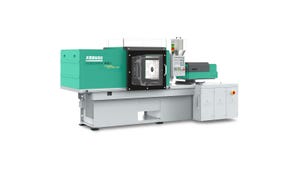Plastic x-ray detector achieves medical-grade imaging performance
Digital x-ray systems offer a number of advantages over conventional analog systems—images are processed faster and can be shared easily, and less radiation is required to produce them—but they also share one disadvantage: digital x-rays still use large glass substrates. Two years ago, researchers at the Holst Centre (Eindhoven, Netherlands) and imec (Leuven, Belgium) demonstrated that the use of plastic substrates in x-ray systems was technically feasible and would result in lighter, more robust, and less expensive devices.
April 21, 2014
Digital x-ray systems offer a number of advantages over conventional analog systems—images are processed faster and can be shared easily, and less radiation is required to produce them—but they also share one disadvantage: digital x-rays still use large glass substrates. Two years ago, researchers at the Holst Centre (Eindhoven, Netherlands) and imec (Leuven, Belgium) demonstrated that the use of plastic substrates in x-ray systems was technically feasible and would result in lighter, more robust, and less expensive devices. Now, the institutes have taken the research a step further and shown that plastic-based x-ray detectors can achieve medical-grade performance requirements.
The proof-of-concept device produces high-resolution images at 25 frames per second and 200 pixels per inch using medical-level x-ray doses, reports imec. By reducing the photodiode leakage current—the photodiode output at zero light—by a factor of 10,000, the researchers have brought the system well within medical parameters. The signal-to-noise ratio is improved as is image quality at low radiation doses, says imec.
The backplane uses low-temperature amorphous-oxide thin-film transistors instead of organic transistors, enabling faster image acquisition, explains imec's External Communications Director Katrien Marent. Mixed metal oxides are relatively easy to process and deliver high performance. The current research from imec and Holst shows that the high mobility and low leakage current are relevant for use in sensor backplanes, Marent told PlasticsToday.
A heat-stabilized polyethylene naphthalate (PEN) film is used for the plastic substrate.
In terms of the material selection process, imec's Gerwin Gelinck noted that functionality was the main criteria. "For an (organic) photodetector, the two principle parameters are the dark current, which should be as low as possible, and light sensitivity," Gelinck told PlasticsToday. "We screened different material combinations, and found one particular combination that worked really well. The next challenge was to retain these parameters when dowscaling from a large test structure to a small pixel size of 126 x 126 micrometers. This involved optimization of the material ink, deposition, and optimization of the surface of the backplane on which the photodetector ink is deposited," said Gelinck.
The goal for researchers now is to scale up the technology and produce a full size 30-x-30-cm demonstrator module for medical applications. The module should be ready with all components fully tested and qualified within two years, according to Gelinck.
About the Author(s)
You May Also Like




